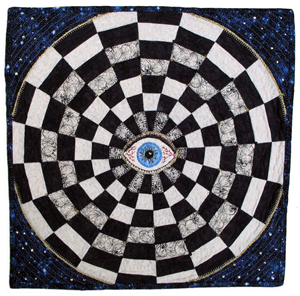Part i: Introduction; Part ii: 18th Century - Antebellum; Part iii: The Civil War & Postwar Era; Part iv: 1880s to 1920s; Part v: The Great Depression; Part vi: 20th Century and 1970s Revival; Part vii: 21st Century and Beyond
In the 21st century, quilting remains extremely popular among North Carolinians, though most practice the craft as a hobby rather than as a necessity. With the availability of cheap imported bedspreads and comforters as well as the high price of piece goods, quilting has become less time- and cost-effective. Further, widespread access to central heating has greatly reduced the need to sleep under multiple quilts. These factors and others have rendered make-do quilting nearly obsolete. For those who quilt because they enjoy it, technology has grown exponentially. Current-day sewers benefit from a host of accoutrement—from rotary cutters to long-arm quilting machines—about which their ancestors could have only dreamed.

Art quilting has become popular, and practitioners often draw inspiration from personal experiences and ideas as well as historic textiles. Rather than using patterns, art quilters often rely on their imaginations to create innovative wall hangings and sculptures. Viewing a nineteenth century star/sunburst quilt moved Karin Miller of Stony Point to create her “Perils of the Birth Canal” quilted wall-hanging. She used crystals, beads, and metallic thread as well as traditional cottons in her work, and she machine quilted the finished piece.
Quilt guilds around the state provide instruction, inspiration, and camaraderie to modern-day quilters in the same way that groups of (primarily) women have supported one another in practicing the craft across generations. Some guilds aspire to preserve the customs of yesteryear by using traditional patterns, seeking out historical reproduction cloth, and strictly practicing only “bee” or hand-quilting. Others seek innovation at every turn, encouraging abstract “art” quilts made from a variety of fabric and nontextile materials, and using computer-programmed sewing machines to quilt their creations in tight swirls and curlicues.
Whatever their preferences, current-day quilters build upon and carry forward a tradition that North Carolinians have practiced for centuries. Though materials, styles, and methods change, quiltmaking has long been and will continue to be an integral part of North Carolina’s cultural and material heritage.